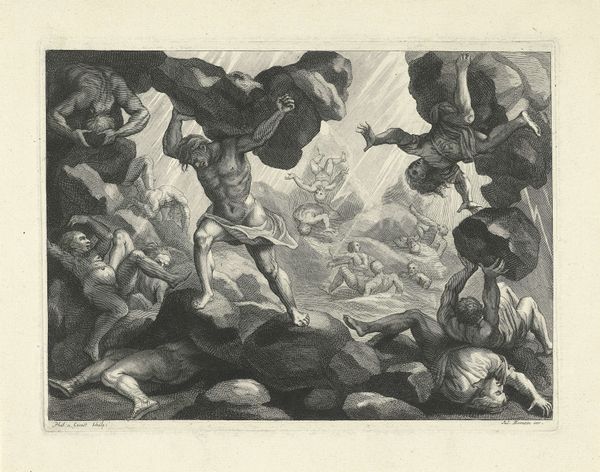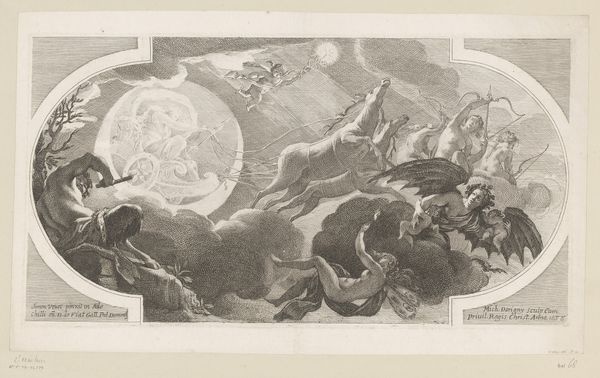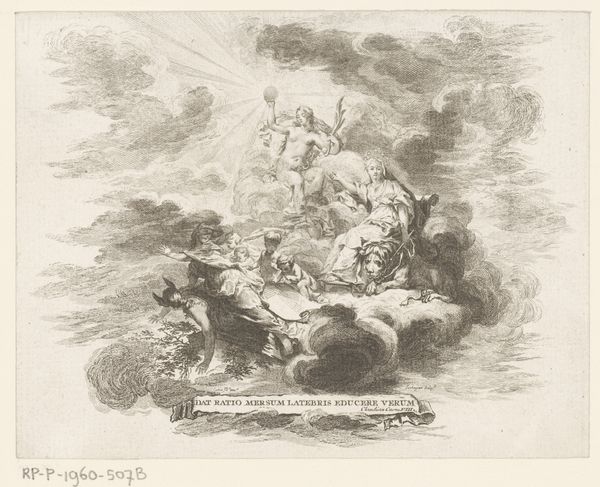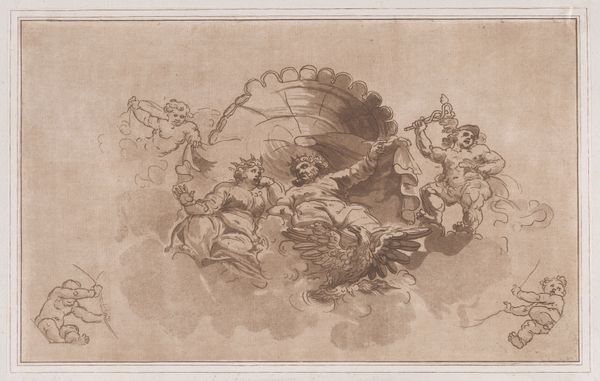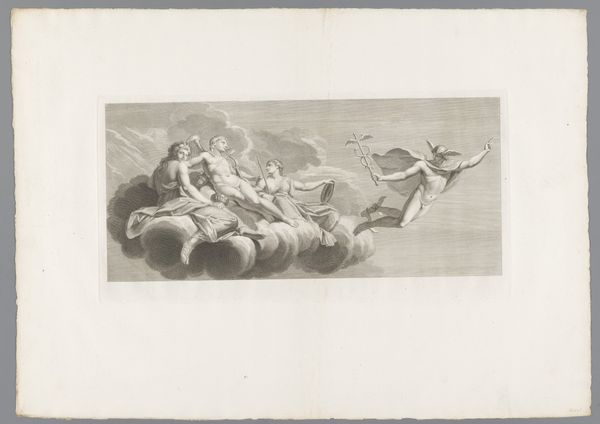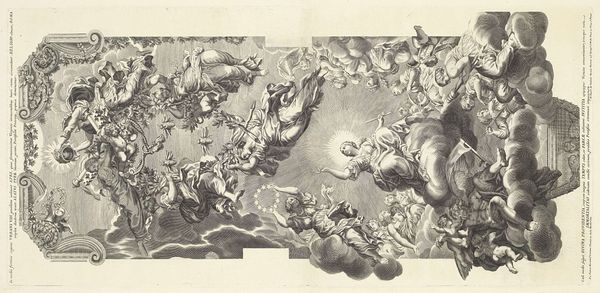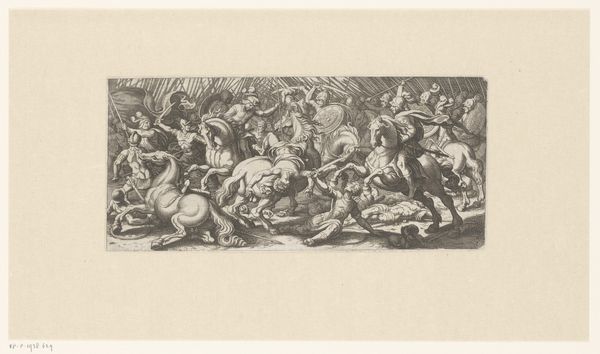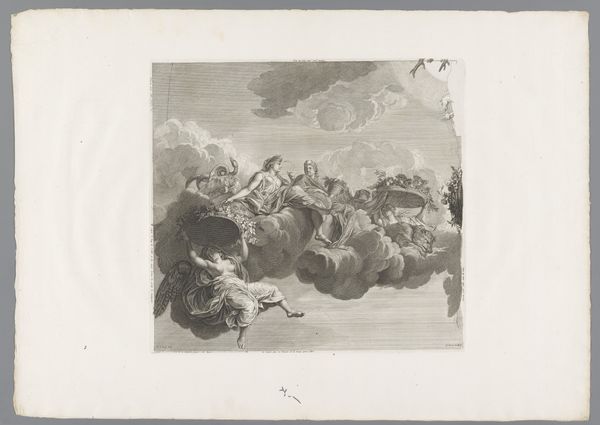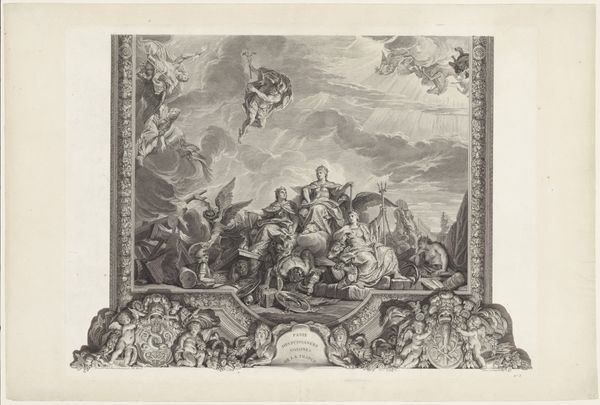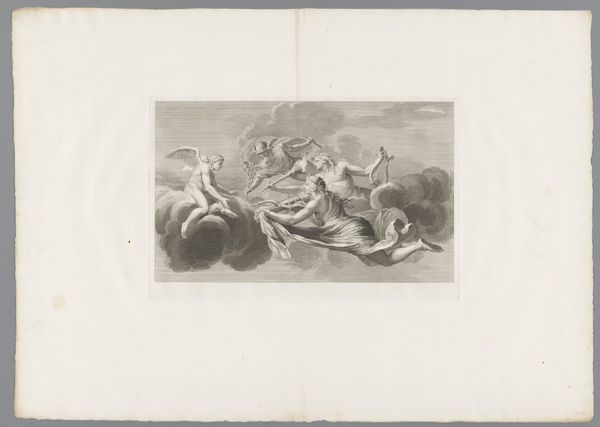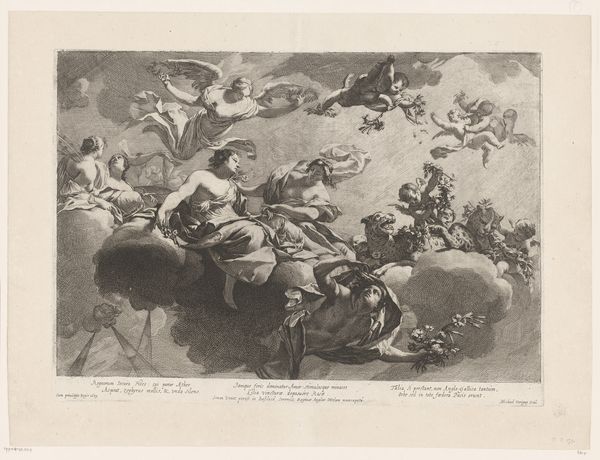
print, engraving
#
allegory
#
baroque
# print
#
landscape
#
figuration
#
line
#
history-painting
#
engraving
Dimensions: height 266 mm, width 505 mm
Copyright: Rijks Museum: Open Domain
This print of Apollo's chariot was made in the 17th century by Michel Dorigny using an etching technique. This process involves coating a metal plate with wax, then drawing through it with a needle to expose the metal. The plate is then submerged in acid, which bites into the exposed lines, creating grooves that hold ink. The nature of etching allows for incredible detail, seen here in the muscular figures and swirling clouds. But the lines also have a graphic quality. Consider how this contrasts with the Baroque drama of the scene, which would often be rendered in painted murals at the time. Etchings like this one were relatively inexpensive, and could be circulated widely. This was a very different proposition to fresco painting, for example, which required a highly skilled artist and a lengthy stay in one location. Printmaking allowed artists to reach a much broader audience, and disseminate their ideas more freely, playing a crucial role in the history of art and design. The material and process, therefore, are deeply connected to the social context of the artwork.
Comments
No comments
Be the first to comment and join the conversation on the ultimate creative platform.

